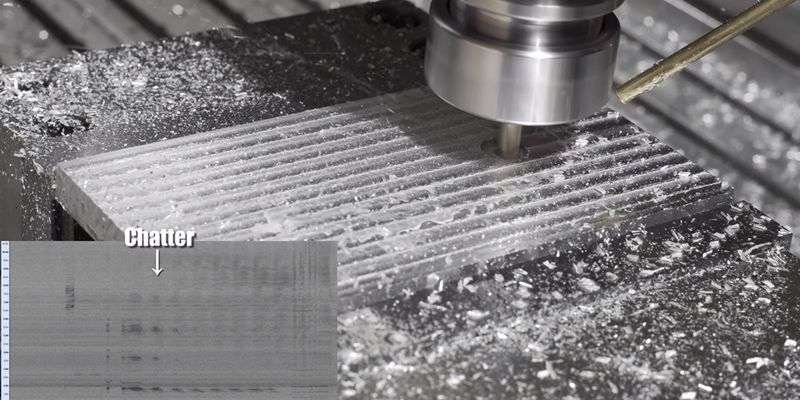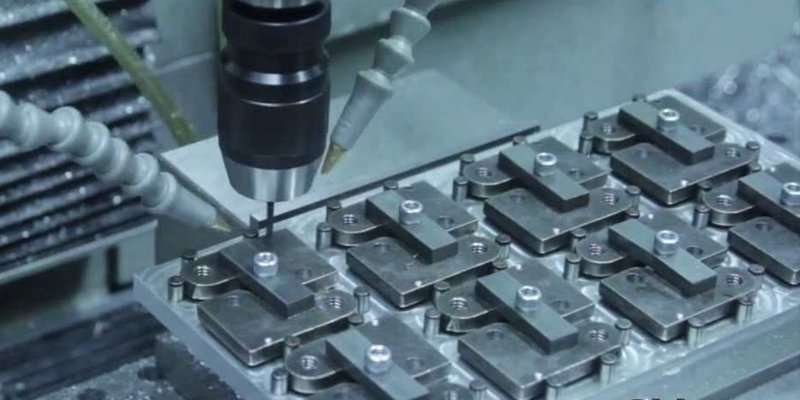For small firms and startups, traditional machining technologies can be expensive and time-consuming. However, CNC prototyping offers businesses or manufacturing companies that want to produce parts and components a quick, cost-effective way that maintains precision and quality.
One major reason why CNC prototype machining is becoming the first choice for prototyping is its flexibility. With this method of prototyping, it becomes possible for manufacturers to design, develop, and modify products within a short period.
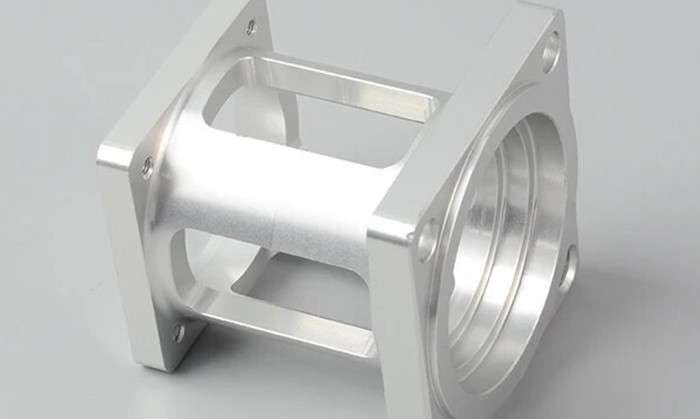
What is CNC Prototype Machining?
CNC prototype machining is a combination of two major manufacturing processes: CNC machining and rapid prototyping. This process employs computer numerical control (CNC) machinery to turn a CAD or 3D model into a physical model or prototype of a product.
The CNC machine uses precision cutting tool movements to produce the prototype. The machine reads instructions on how to cut the part from the G-code supplied by converting the CAD to CAM. The result of CNC prototyping is a very precise, consistent part that meets specific requirements.
As a result, most companies that need to manufacture a small batch of parts before producing a larger one frequently use prototype CNC machining. Prototyping allows companies to determine the appearance of their products, test them, and ensure they work as planned.
Why Choose CNC Technologies for Prototyping?
There are several reasons why CNC machining is ideal for prototyping. One such reason is the use of computerized controls. These automated controls make it easier to monitor the movement of the workpiece and cutting tool, delivering a high degree of accuracy and precision in prototyping. Automated controls consider every element of your design to ensure that the prototype created is a good replica.
The speed of CNC machining also makes it an excellent process for prototyping, as opposed to traditional processes like injection molding, which can be time-consuming.
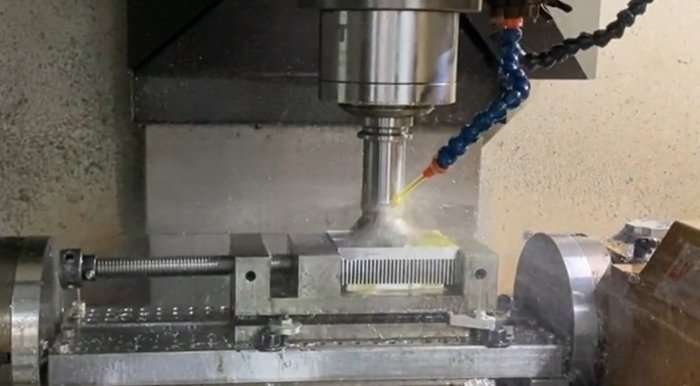
Advantages of Using CNC Machining for Making Prototypes
CNC machining simplifies prototyping while enhancing the quality of the manufactured prototypes. Here are some advantages of using CNC machining for prototyping.
Wider Range of Material Choices
Unlike other manufacturing techniques like 3D printing, CNC prototype machining can handle a wide range of highly machinable materials, including tough metals like titanium and alloys as well as plastics and wood. Consequently, it’s possible to use the same material for both prototyping and the final product, which is a significant benefit.
CNC prototype machining can be applied to materials such as PS, LDPE, HDPE, PC, PP, PMMA, POM, PA GF, PC GF, ABS, and Teflon, as well as metals and metal alloys like steel, stainless steel, titanium, aluminum, zinc, brass, and bronze.
Repeatable and Consistent
A CNC prototype is highly repeatable, this means that every final product produced by CNC machining will be an exact duplicate of every other one produced through the same process.
High Accuracy and Precision
CNC machining delivers tight tolerances and high accuracy because of the precise control over the movement of the CNC machining tools. This ensures that parts and prototypes fit their intended purpose. Moreover, since the CNC machining process is accurate, manufacturers know that any defects in the produced prototype originate from the design phase rather than the actual production step.
Cost-effective
Over time, CNC prototype machining reduces costs for manufacturers. Discovering faults or defects in a small batch of prototypes is more economical than addressing issues in the large quantity of final parts produced during the manufacturing stage.
In addition, subsequent revisions typically only require minor adjustments to the CAD files, saving money on design.
Flexibility and Iterability
CNC prototype machining doesn’t require a mold or other time-consuming preconditions, which makes the process fast. Machining centers can quickly produce prototypes by adjusting, running them through the CNC machining process again, and editing the CAM/CAD files.

Limitations of Prototyping with CNC Machining
Although CNC prototype machining is one of the best methods for creating prototypes, it has some drawbacks.
Expertise
Designing a CAD file and creating a CAM file from it requires technical expertise. Additionally, some experience is necessary to operate and set up the CNC machine.
Moreover, not all manufacturers that implement CNC machining can produce CNC prototypes without proper training. For this reason, it’s always a good idea to contract with professionals to handle CNC prototype machining tasks.
More Expensive than 3D Printing
CNC prototype machining can be significantly more expensive than SLS 3D printing due to the material and machine costs involved. However, prototyping often prioritizes functional perfection over cost minimization, which is why costs can sometimes be very high.
Material Waste
As a subtractive process, CNC machining involves removing material from the workpiece during the prototyping or production phase. Consequently, material costs increase in correlation with the amount of material used throughout the manufacturing process.
Furthermore, this can lead to increased material waste and related costs, particularly because it is highly unlikely that a prototype will be perfect on the first attempt.
Geometrical Limitations
Since CNC machines primarily work from the outside, creating internal geometries can be very challenging. For internal geometries, other manufacturing technologies like 3D printing, which excel at creating internal geometries, are more suitable.
Step-By-Step Guide to CNC Rapid Prototyping Processes
The process of creating CNC machined prototypes involves multiple steps. Here’s an in-depth of each step involved.
Step 1: Design Ideation
The main stage in CNC prototyping is drafting the CAD model design. You must produce several flawless designs for the product. Design for Testing (DFT), Design for Manufacturing (DFM), and Product Dimensioning and Placement are a few examples of these brainstorming sessions. The design ideation phase is crucial because, if done right, it simplifies other phases.
Step 2: Generating 3D File
A 3D file, like a CAD model design, is necessary for CNC machining. That’s why it’s important to convert the authorized designs into a machine-readable 3D file. The final workpiece’s measurements, characteristics, and aesthetics are determined by these 3D model designs.
Step 3: Order of Machining Sequence
In CNC prototype machining, various manufacturing techniques are involved, including CNC milling, CNC turning, and CNC drilling. As a result, you should establish the order in which to machine the parts based on the specific workpiece.
Step 4: CNC Programming
Manufacturers provide the sequence of CNC production processes and tool operating instructions with a CNC application. G-code and M-code play a vital part in informing the CNC machines about tool selection, pathing, run numbers, cutting depths, and feed rates.
Step 5: Prototyping
Once programming is complete, it’s input into the CNC machine’s numerical control panel. The prototyping commences seamlessly when the workpiece is mounted on the tool and the machine is set to operating mode. Prototypes can be trial products or fully functional ones. Manufacturers create fully functional prototypes by milling the components individually and then assembling them according to Design for Assembly (DFA) principles.
Step 6: Testing
Testing is the final, most critical phase in CNC prototype machining. The objectives are to check for flaws, assess failure potential, and test the operational capability of the workpiece. Product experts conduct rigorous tests on the CNC prototype and approve it before proceeding to full production. If a prototype does not meet all specifications, an alternative prototype design is selected and machined.
Various Operations Involved in CNC Machining Prototypes
Manufacturers have multiple CNC machining operations available for creating prototypes. The choice of CNC operation for prototype production often depends on factors like material type and design specifications. Here are typical machining techniques used in CNC prototyping.
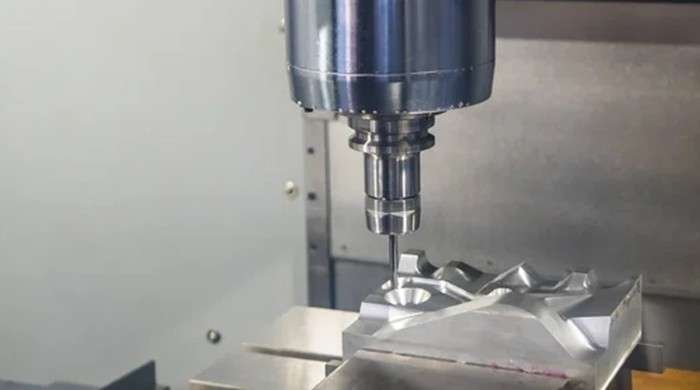
CNC Milling
This process uses a milling machine to create prototypes by removing material from a workpiece. The CNC milling machine is equipped with a multi-point cutting tool that rotates to make precise cuts of various lengths and shapes on the workpiece.
Precision features like accurate geometry, close tolerances, and superior surface finishes can easily be produced with CNC milling. It works especially well for making intricate holes, indentations, and three-dimensional curves.
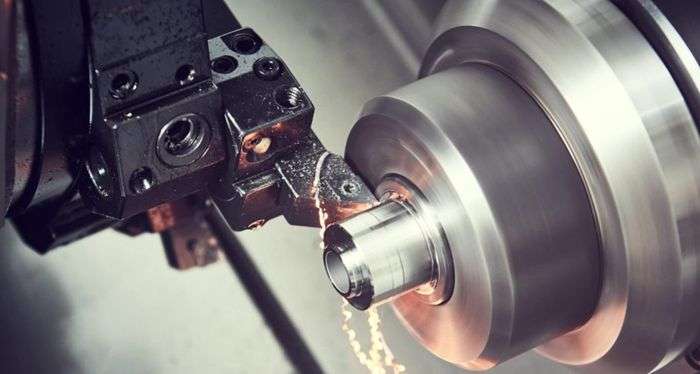
CNC Turning
In this operation, a lathe tool is used for prototyping. It is suitable for creating complex prototypes and finished products with cylindrical features. During this machining operation, the workpiece rotates near the stationary lathe cutting tool.
The turning machine uses a single-point cutting tool, as opposed to the milling machine, to remove material from bar stock to manufacture cylindrical parts. CNC turning is ideal for creating slots, threads, and tapers on the inner edges of a prototype, as well as linear features on its surface.
Multi-Axis Machining
This flexible prototyping method, using more axes than traditional methods, is perfect for creating prototypes with complex specifications. This process uses machines with four, five, or even nine axes to achieve the desired objectives.
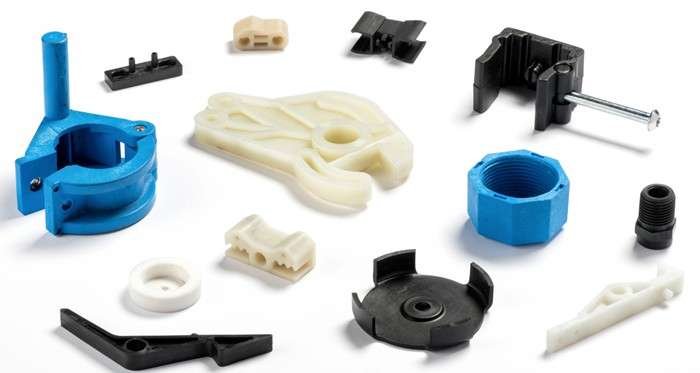
Applications of CNC Machined Prototypes
One prototyping method that is widely accepted across all industries is CNC prototype machining. The following are a few of the industries that use this method more frequently than others.
Medical Industry
This sector requires equipment and parts that are incredibly accurate and precise. The medical industry benefits from material choices provided by CNC prototype machining, given its need for parts composed of both metal and plastic.
Additionally, as medical technology advances, the demand for parts with tight tolerances increases. The medical industry uses CNC machining for prototyping parts such as prostheses, biopsy tubes, surgical scissors, implant holders, and more.
Automotive Industry
Creating vehicle prototypes that consistently meet the required specifications would be difficult without CNC prototype machining. The automotive industry requires parts and components with high accuracy and strict tolerances, which can range from wheels and suspensions to brakes and gears. To ensure vehicle safety, all of these parts must adhere to incredibly precise tolerances.
Military Industry
In the military industry, this technology is primarily used by the Research and Development (R&D) department. Military R&D employs CNC prototype machining to create parts for airplanes, vehicles, and other equipment. The method is favored because it allows for the rapid production of parts, regardless of the toughness of the materials.
Aerospace Industry
CNC prototyping technology serves two main functions in the aerospace industry. The first is to create components that are extremely accurate and precise. The second function is testing these components and other aerospace innovations to ensure they function properly.
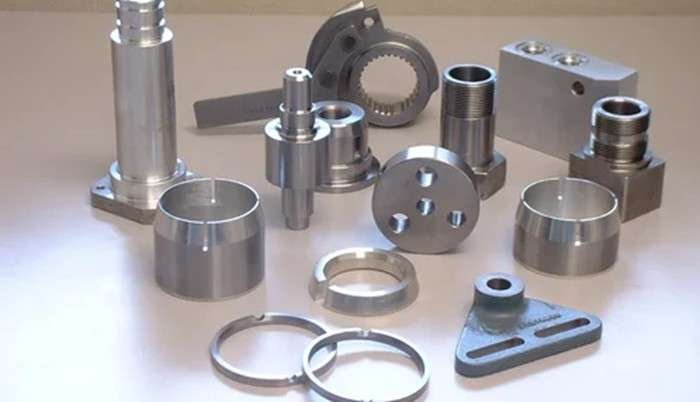
Considerations and Tips for CNC Prototyping Machining
Several essential factors must be considered for successful CNC prototyping, as manufacturers depend on CNC prototype machining to create parts that meet stringent standards and demands.
Use Standard Tolerances
Tighter tolerances often call for additional fixtures and specialized cutting tools, which increases CNC machining costs. Thus, using standard tolerances is generally the preferable approach. It would be best to consult with the CNC service expert managing your component’s design to determine the suitable tolerance level for your prototypes.
Reduce Prototype Design Complexity
Another important consideration is the complexity of your design. Remember that the more complex your prototype design, the higher the CNC machining costs will be. Additionally, setting up the machine for a model with various angles and undercuts takes longer, thereby extending the development time. Therefore, simplifying your prototype is advisable to avoid increasing production costs and time to market.
Take Tool Geometry into Consideration
Because CNC prototyping involves rotary cutting, check the axial characteristics of the cutting tools. Consider the shape of the tool, so avoid sharp corners in your prototyping. Circular cutting instruments with limited cutting lengths are typically used in this method, which affects the cutting operations due to the tool’s geometry.
Consider Wall Thickness
While developing your design, consider the prototype’s wall thickness since insufficient thickness can lead to mechanical instability or failure of your CNC-machined product or prototype. As a general rule, keep the wall thickness of your metal components at least 0.8 mm and ensure that the walls of plastic components are no less than 1.5 mm.
Partner with a CNC Prototype Manufacturing Expert
Collaborating with an experienced CNC machining professional is important to the success of your prototyping project. Manufacturing experts focus on optimizing the machining processes to produce high-quality prototypes. However, without the assistance of an experienced prototype manufacturer, fully capitalizing on the benefits of CNC machining for prototyping would be challenging.

Comparison Between CNC Prototyping and 3D Printing
Experts frequently debate over which of the two technologies – CNC machining or 3D printing, is better for prototyping. Based on critical factors, the following summarizes how the two technologies differ.
Technique Working Principle
CNC machining is a subtractive manufacturing process that creates a product by removing excess material from a workpiece using a cutting tool. On the other hand, 3D printing is an additive process, it starts from nothing and builds the product by gradually adding and shaping material.
Materials
CNC technology can machine a variety of materials, including metals, wood, and polymers, while 3D printing is more limited in material compatibility due to the process of heating and shaping the material, most commonly used for thermoplastic prototypes.
Utilization
Since CNC machining is subtractive, it tends to generate more waste. However, recyclable waste materials can be sold to offset costs. In contrast, 3D prototyping, as an additive manufacturing method, results in better material utilization.
Geometry Possibilities
CNC machined parts are typically created from the outside in, making it difficult to produce parts with intricate interior geometry. Conversely, 3D printed parts are built from the inside out, allowing for complex interior geometries.
Comparison Between CNC Machined Prototypes and Injection Molded Prototypes
Although these two types of prototypes provide a visual representation of the finished product, they are different. Here’s how they compare:
Material Used for Prototyping
Prototypes made via injection molding are typically made of polymers or rubber. This is because the prototypes are formed by pouring molten materials into a mold during the production process. On the other hand, CNC machining uses tool cutting made of metals and they work great to produce prototypes made of metal, plastic, or wood, depending on the material that the manufacturer chooses.
Surface Quality
Injection molding is a precise process, but the prototypes produced may exhibit small defects such as jetting, short shots, voids, flow lines, sink marks, and warping. These flaws affect the appearance of prototypes made by injection molding.
However, CNC-machined prototypes often have a superior surface finish because more sophisticated tooling is employed during the process.
Part Tolerance
CNC machine-produced prototypes have a tolerance level of ± 0.01mm, which is indicative of the accuracy and precision of the machining process.
Prototypes made using injection molding offer component tolerances ranging from ± 0.1 to 0.7 mm. The relatively poor tolerance level seen in injection-molded prototypes is due to post-injection shrinkage.
Production Volume
With its ability to make precise prototypes flexibly without the need for molds, CNC machining is ideal for low-volume production. In contrast, injection molding is better suited for high-volume production because it requires a significant upfront investment to create molds. However, once the mold is made, the cost per unit decreases dramatically.
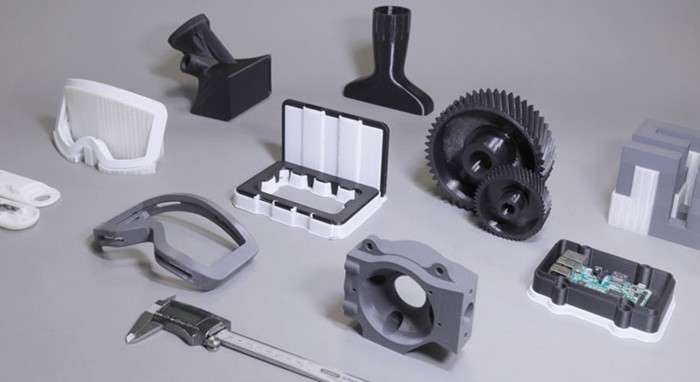
Get CNC prototyping services at XinCheng
At XinCheng, you can access CNC prototyping that is effortless and efficient. With cutting-edge technology and a skilled team, we offer a wide of CNC machining services for metal and plastic machined prototypes.
From concept to final product, XinCheng’s CNC prototyping services will help to meet the development process, providing high-quality prototypes for various industries. Whether it’s for automotive, aerospace, or consumer electronics, our expertise ensures that prototypes meet exact specifications and strict standards.
FAQs
Are there better options for prototyping than CNC prototype machining?
Depending on the specifics of the project, there may be better solutions than CNC prototype machining. For intricate, one-of-a-kind objects, CNC offers unparalleled accuracy. However, 3D printing might be faster and more cost-effective for simpler designs or rapid iterations.
How long does it take to create a CNC machining prototype?
CNC machining prototypes can often be completed within a few hours to days. Traditional prototyping methods can take weeks or even months.
What factors affect the cost of CNC prototyping?
The complexity of the design, tolerances, and material choice all influence CNC prototyping costs. The type of CNC machine being used and the selected surface finishing option are additional factors.
What materials are used for CNC prototypes?
For CNC metal prototypes, metals such as copper, brass, titanium, zinc, magnesium, stainless steel, and aluminum are used. Plastics suitable for CNC plastic prototyping include acrylic, ABS, PP, nylon, PC, Teflon, HDPE, and LDPE.

